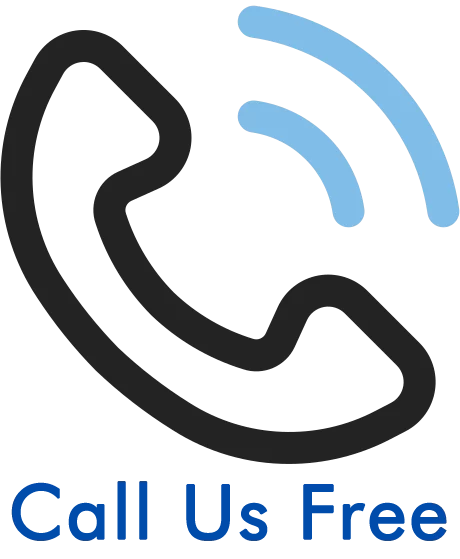What Are The Most Common Accidents At Work Claims?
In this guide, we will look at the most common accidents at work as well as how to claim compensation for injuries sustained in a workplace accident. It’s important to note that you can only claim if your employer breached the duty of care they owed you and caused you harm as a result.
We will explore different types of workplace accidents as well as provide examples of how an employer’s negligence could cause you harm.
You may be contending with the consequences of an accident at work right now. For instance, you may be struggling with bills or the costs of medical care as you try to recover. If so, this guide could help as we look at how compensation could be awarded for your injuries and any financial losses associated with the harm you sustained.
The sections below offer detailed information, but if you want to speak with a member of our friendly team, please feel free to:
- Call us on 0203 870 4868
- Fill out the contact form on our website
- Use the live support function below
Select A Section
- When Am I Eligible To Claim Compensation For A Workplace Accident?
- What Are The Most Common Accidents At Work?
- How Many People Suffer Non-Fatal Injuries At Work?
- How Many People Suffer Fatal Injuries At Work?
- Calculating Compensation For Accidents At Work Claims
- Most Common Accidents At Work No Win No Fee Claims
When Am I Eligible To Claim Compensation For A Workplace Accident?
Before looking at the most common accidents at work, it is important to be aware of your rights as an employee.
Employers have a legal duty to each and every employees’ health, safety and welfare. This is enshrined in workplace legislation. Section 2 of the Health and Safety at Work etc. Act 1974 (HASAWA) makes it clear that they need to do everything that is reasonable and practicable to prevent an employee from suffering harm.
You could have the right to claim compensation if you can show that:
- Your employer owed you a duty of care under HASAWA.
- They did not take all reasonable and practicable steps to keep you safe, meaning the duty was breached.
- The breach led to an accident where you suffered harm.
If you’re unsure whether you can make an accident at work claim, just call. Our advisors are around 24/7 to offer free guidance.
What Are The Most Common Accidents At Work?
Now we have explained how claims work, let’s answer the question: what are the most common accidents at work?
When looking at the most common types of accident in the workplace, we could refer to information gathered by the Health and Safety Executive (HSE), which regulates workplace health and safety in Britain.
This government agency publishes annual statistics about certain types of injuries and incidents that are reported by employers under the Reporting of Injuries, Diseases and Dangerous Occurrences Regulations 2013 (RIDDOR).
We have used figures from RIDDOR to look at the most commonly reported accident kinds during 2022/23 in the sections below.
Slips, Trips, and Falls
According to the statistics, slips, trips, and falls on the same level accounted for 32% of all non-fatal injuries in 2022/23.
An example of how an employer’s negligence could cause someone to sustain an injury in a slip, trip or fall might include:
- Your employer fails to provide slip-resistant footwear after carrying out a risk assessment that found the floors in a factory room posed a risk to employee safety. As a result, you slip over and break your wrist.
Handling, Carrying, and Lifting
Manual handling activities, such as production lines, could have the potential to cause employees to sustain harm if employers don’t provide them with adequate training to do their job safely.
According to the RIDDOR figures, 17% of non-fatal injuries were sustained while handling, lifting or carrying.
An example of where you might be able to claim is:
- Your manager tells you to move a heavy item by hand when machinery should be used for support. You badly hurt your back while lifting the item.
Struck By A Moving Object Or Vehicle
Modern work environments could contain a lot of potential hazards in the form of moving machinery or processing equipment, as well as workplace transportation vehicles like forklift trucks. As a result, being struck by a moving object or vehicle is one of the other types of common accidents at work.
Just over one in ten non-fatal injuries were caused by being struck by a moving, flying or falling object, according to the 2022/23 RIDDOR statistics. An example of a case that could lead to a compensation claim is:
- An employee is not given training on using a forklift truck. They lose control of the vehicle and collide with someone working on the floor. The struck employee suffers a broken leg and severe internal damage.
Falling From A Height
Other types of common accidents at work include falls from height. 8% of non-fatal injuries reported via RIDDOR were associated with falls from height. The nature of how the accident occurred was not reported but an example of how an employers negligence could cause this type of accident might include:
- Your employer does not carry out regular risk assessments to maintain the safety of equipment at work. As a result, you fall from a defective ladder, causing you to sustain a broken leg.
If you have experienced a similar incident to the examples listed above, please don’t hesitate to get in touch with our team. They could discuss accidents at work, compensation examples and your ability to start a compensation claim.
How Many People Suffer Non-Fatal Injuries At Work?
According to self-reports made to the Labour Force Survey, 561,000 workers suffered a non-fatal accident during 2022/23. Furthermore, the reports showed that around 437,000 injuries required up to 7 days off work and an additional 124,000 required more than 7 days off work. This represents a rise of over 20% on the absences estimated in 2020/21.
It’s important to note that these injuries could have been caused by accidents that occurred despite an employer taking all the correct steps to prevent their employees from experiencing harm. However, in order to pursue a valid claim, your employer must have acted negligently.
How Many People Suffer Fatal Injuries At Work?
Fatal injury statistics relate to people who lost their life due to an accident at work. During 2023/24 a total of 138 people died at work, according to employer reports made under RIDDOR. The most common accidents at work that caused fatalities included:
- Falls from a height, which accounted for 50 deaths
- Struck by a moving vehicle – 25 deaths
- Struck by a moving object – 20 deaths
- Trapped by something collapsing or overturning – 15 deaths
- Contact with moving machinery – 8 deaths.
It is possible to make a fatal accident claim on behalf of someone else if employer negligence led to an accident where they lost their life. If you’d like to learn more about the process, our team is available to help. Please get in touch on the number above.
Calculating Compensation For Most Common Accidents At Work Claims
Whatever the precise circumstances of your personal injury claim, if you have evidence that the accident happened because of negligence on the part of your employer, you could have a valid claim.
Each successful compensation payout might include general damages. These provide compensation for the physical or psychological injuries you may have experienced as a result of negligence. They aim to acknowledge the pain, suffering, or loss of amenity you have suffered.
As part of the accident at work claims process, you may need to sit for an independent medical assessment. The assessment will produce a medical report that shows the severity of your injuries and the extent to which they might impact your future quality of life. Furthermore, details of the assessment may be used when valuing your injuries.
The assessment of your injuries can then be used alongside a publication called the Judicial College Guidelines which is often used to help value claims. The guidelines provide bracket compensation figures for various injuries at differing levels of severity. These figures have been used to create the table below. However, please only use the figures as a guide because actual settlements vary based on unique factors associated with your claim.
| Injury | Severity | Damages |
|---|---|---|
| Numerous Severe Injuries Plus Financial Loss | Very serious | Up to £1,000,000+ |
| Brain Damage | Very severe (a) | £344,150 to £493,000 |
| Neck | Severe (a) (i) | In the region of £181,020 |
| Hand Injuries | Serious Hand Injuries | £35,390 to £75,550 |
| Shoulder | Severe (a) | £23,430 to £58,610 |
| Deafness or Tinnitus | Total hearing loss in one ear (c) | £38,210 to £55,570 |
| Knee | Severe (a) (iii) | £31,960 to £53,030 |
| Elbow | Less severe (b) | £19,100 to £39,070 |
| Facial Disfigurement | Significant scarring (c) | £11,120 to £36,720 |
| Ankle | Modest (d) | Up to £16,770 |
Additionally, if you can provide solid documented proof of financial loss caused by the injuries such as wage slips that show a loss of earnings, you could claim back the loss under special damages. Other examples of expenses associated with your injuries that you could claim back might include:
- Medical bills
- Costs for care
- Travel costs
As mentioned, there must be solid proof to substantiate these expenses. Speak to our advisors now to see if you could be eligible to claim for other costs related to your injuries.
Most Common Accidents At Work No Win No Fee Claims
Now that you have a clearer understanding of what the most common accidents at work are, you may be keen to start a personal injury claim for yourself.
If so, you may wish to seek legal representation from a solicitor who offers No Win No Fee services. When you enter into an arrangement such as this with a personal injury solicitor there are numerous immediate benefits, such as:
- There are no fees required upfront to hire a solicitor
- There are no ongoing costs to pay while the solicitor works on your claim
- If the case fails, there is no success fee to pay your No Win No Fee solicitor
A successful outcome requires payment from your compensation. This is taken as a legally capped percentage. However, your solicitor will discuss the fee with you before they start working on your case.
Our panel of solicitors all work on this basis and could take on your claim if it has a chance of success. Get in touch for a free assessment of your case or to find out more information. You can contact us by:
- Calling us on 0203 870 4868
- Filling out the contact form on our website
- Using the live support function below
Related Articles On Common Accidents At Work Claims
- Learn more about whether suing an employer can create problems
- More information about making an accident at work claim on behalf of someone else
- Making an accident at work claim as a self-employed person
- Advice on claiming Statutory Sick Pay (SSP)
- Help from the NHS
- Government guide on claiming compensation after an accident or injury
Thank you for reading our guide on the most common accidents at work claims. We hope it’s provided you with the information you need. However, if you have any additional questions, please get in touch by using the details above.







